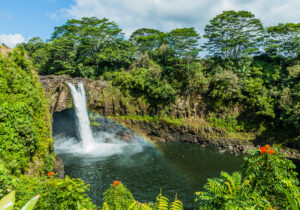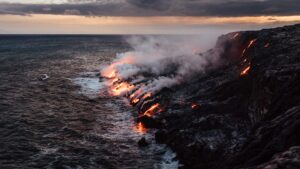Only In Your State has information on the Mo’okini Luakini Heiau which is located on the coast of North Kohala on the Big Island.
Located in an isolated area of the North Kohala Coast on Hawaiʻi’s Big Island is a place so shrouded in darkness that it is advised you only visit during the day, though that might simply be due to the fact that there is no electricity or lights in the area. The Mo’okini Luakini Heiau was one of the first temples to be built on the island, and has an evil history rife with human sacrifice.
Ancient Hawaiʻian temples, or heiaus, were built for many reasons, including the treatment of the sick, offering of the first fruits, to start and stop rain, to increase the population, achieve success in distant voyaging, ensure a nation’s health, or reach peace, for example. There was only one form of heiau, however, that was dedicated via human sacrifice; the luakini heiau was built to achieve success in war.
The Mo’okini Luakini heiau is dated to approximately AD 480, though it wasn’t until much later that the real evil began.
According to Hawaiʻian mythology, 500 years after the temple’s construction, a Tahitian high priest named Pa’ao arrived in an attempt to bring structure and order to the community. But with that structure came a creepy new tradition as well: human sacrifice.
The large, flat stones that were used in human sacrifice still sit near the heiau, and some visitors claim that they can feel restless spirits that roam the temple.
Modern archaeologists now discredit the existence of Pa’ao, though many native Hawaiʻians still believe that he was a historical figure, and vilify him for introducing the bloody, barbarous rites of the luakini heiau. While we may never know for sure how the Mo’okini Luakini Heiau came to be, we can agree that the human sacrifice that took place there left a dark stain on our otherwise vibrant history.
Despite the temple’s evil past, it is still considered to be one of the most historically significant sites throughout the Hawaiʻian Islands. After all, the temple wasn’t used solely for human suffering; it was often used by the priests to communicate with the gods and long-dead ancestors.
Legend has it that a 15-mile chain of people was formed so 18,000 workers could pass the rocks required to form the wall of this sacred site – and that the temple was enlarged in a single night.
Because there are no lights out here, we suggest visiting during the day. The heiau was designated as Hawaiʻi’s first National Historical Landmark in 1963, though it wasn’t until 1978 that the kapu of restrictions was lifted and ordinary individuals were allowed to enter the structure that is surrounded by six-foot high walls (access was limited to kings and chiefs until this point).




